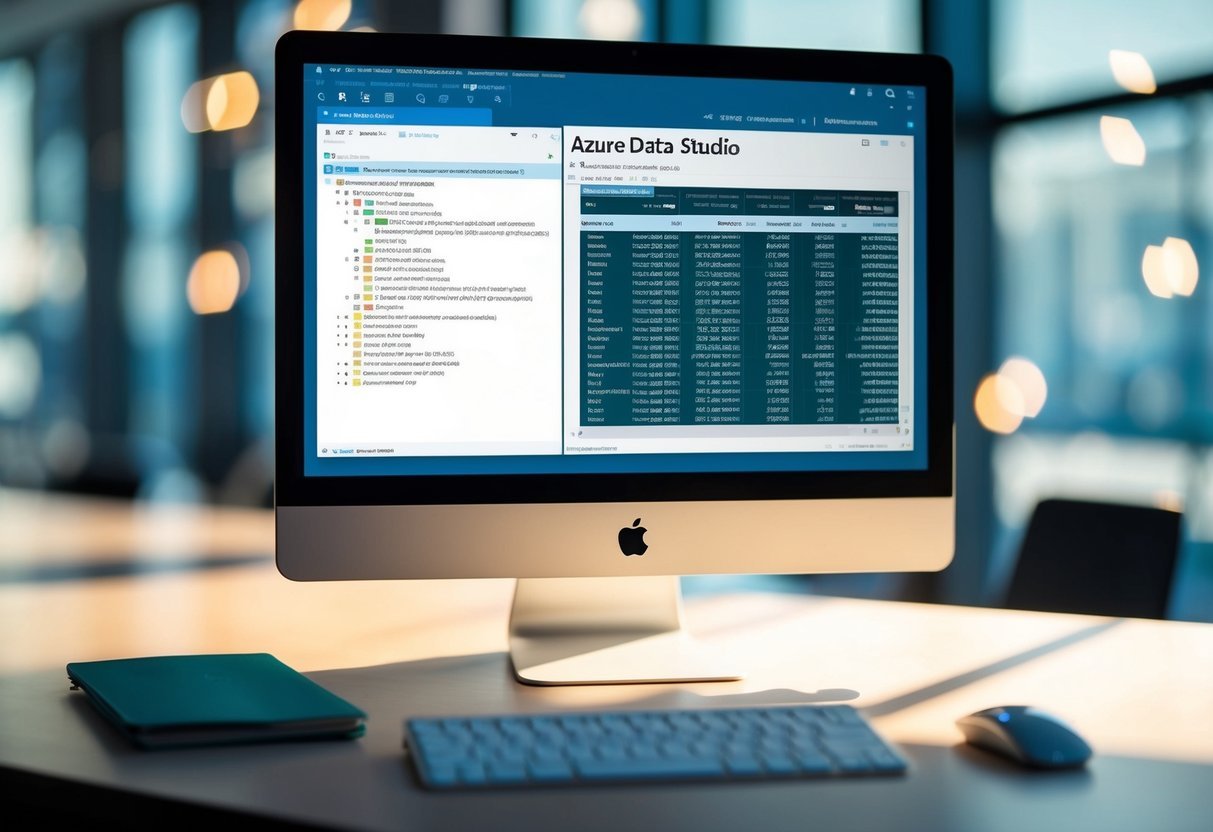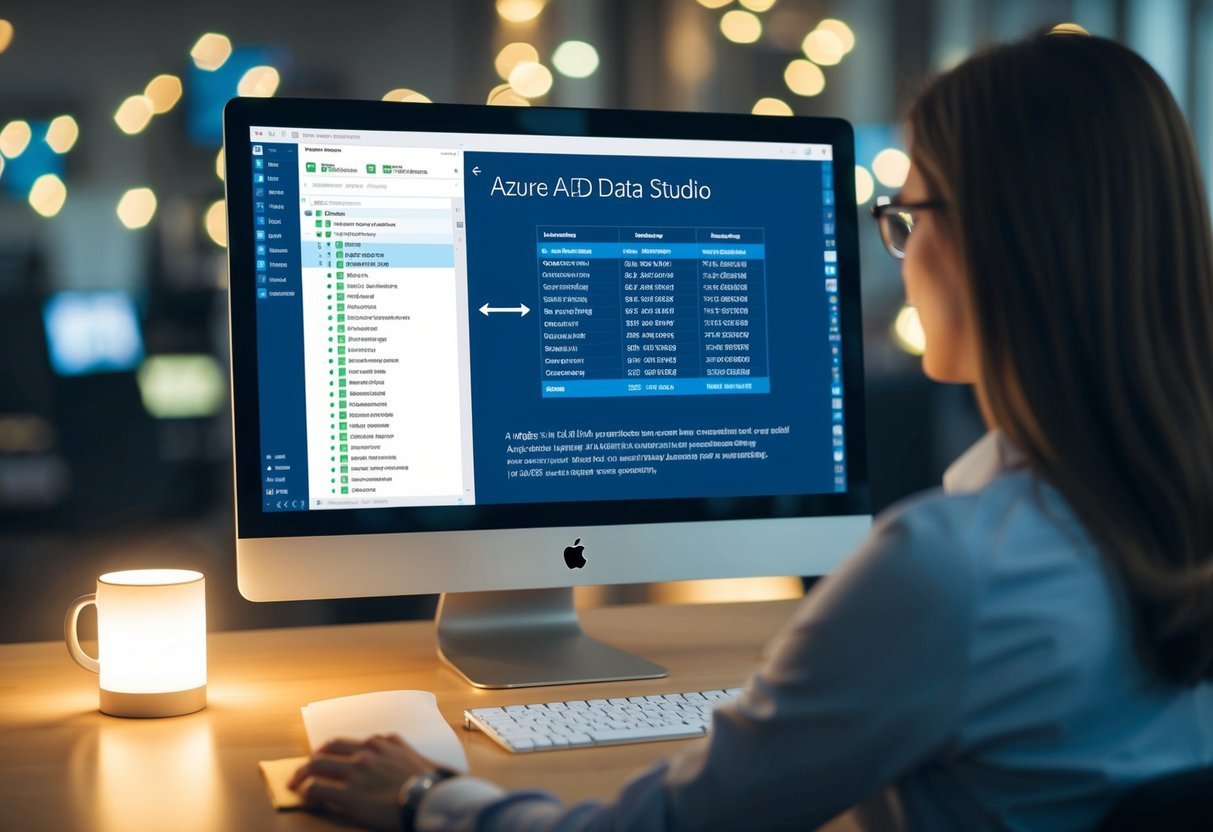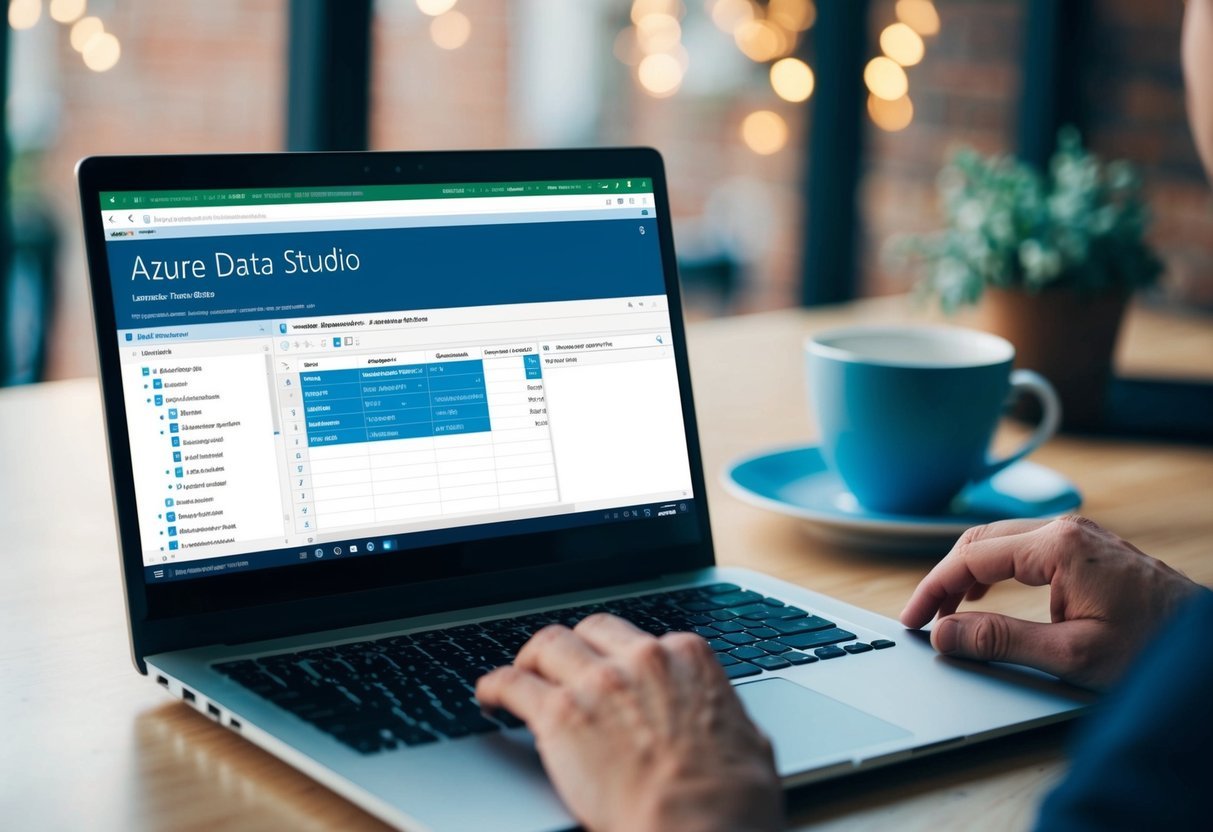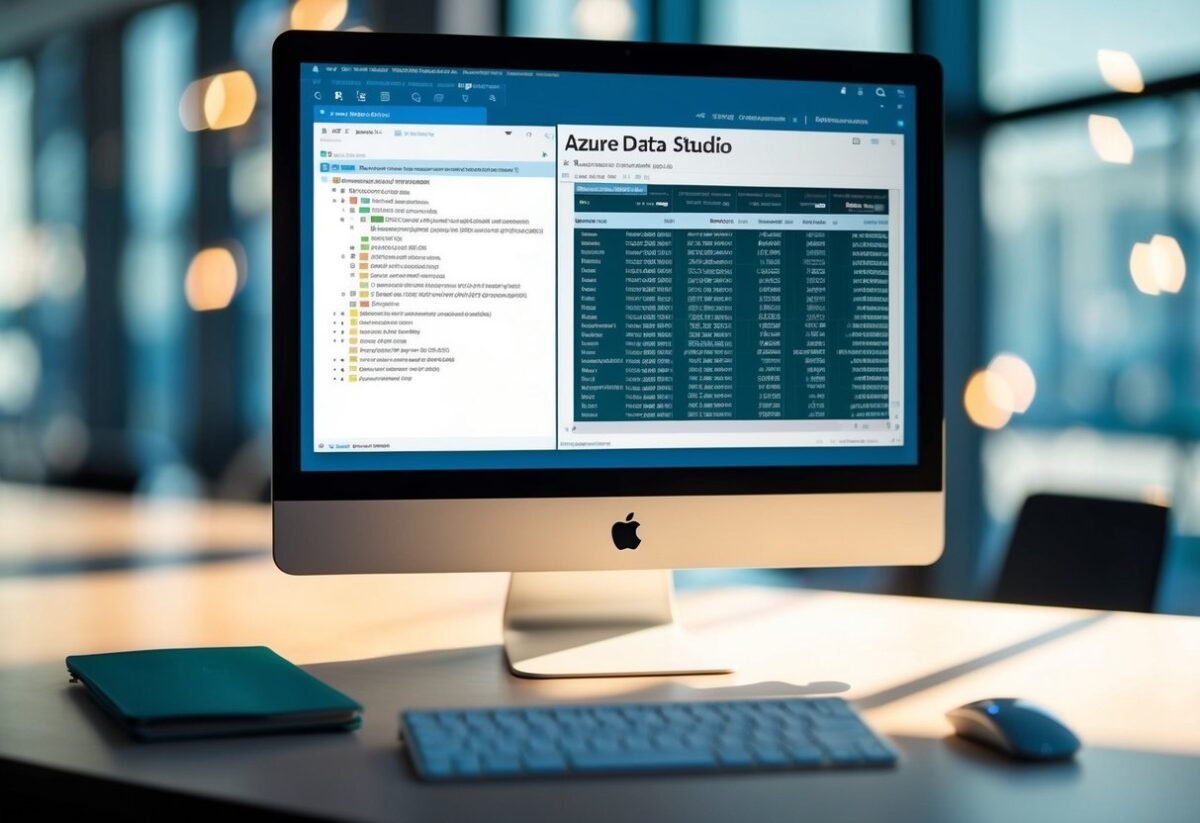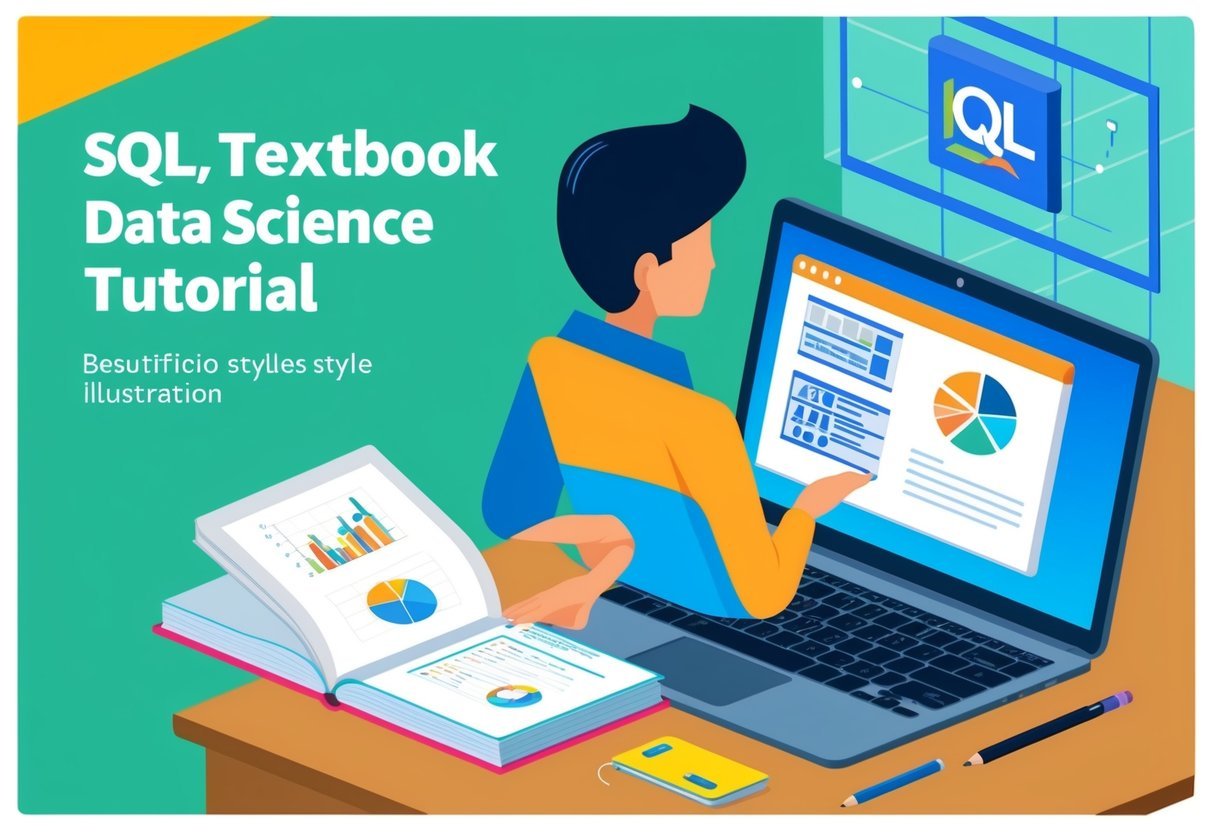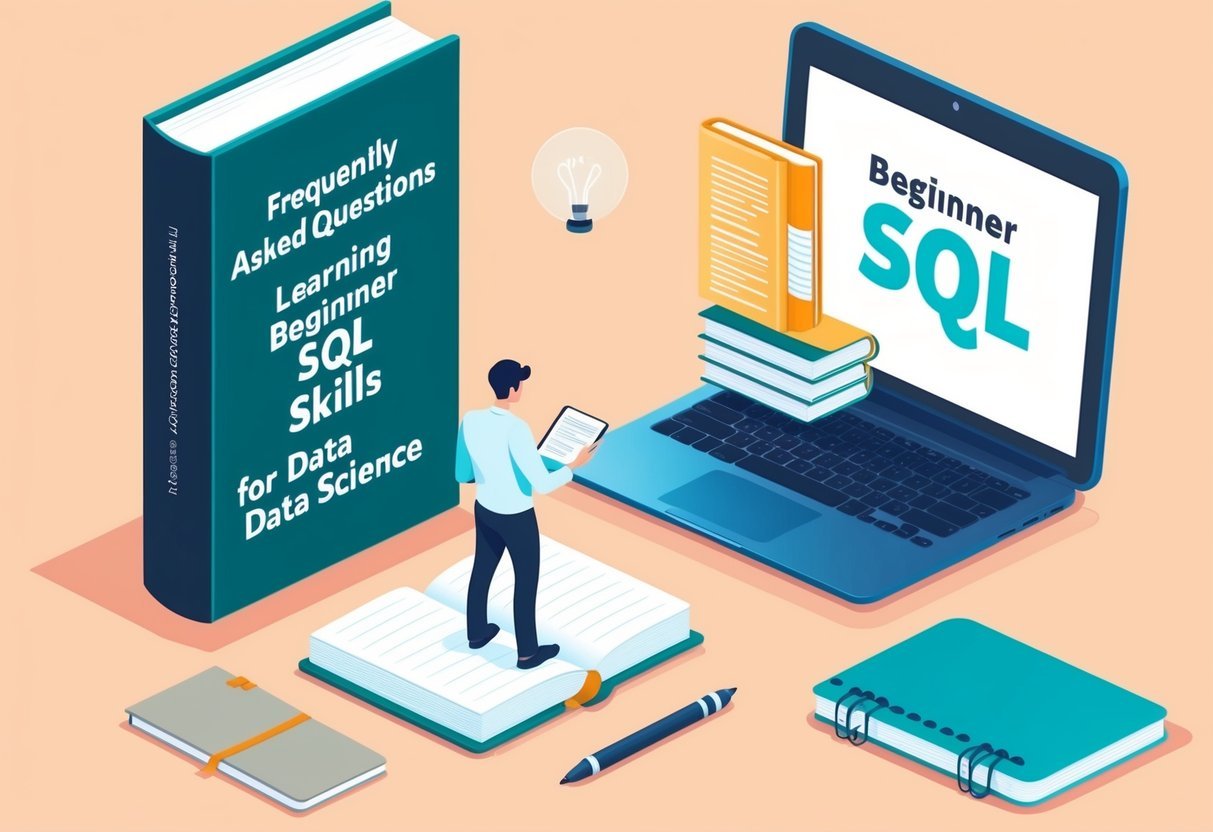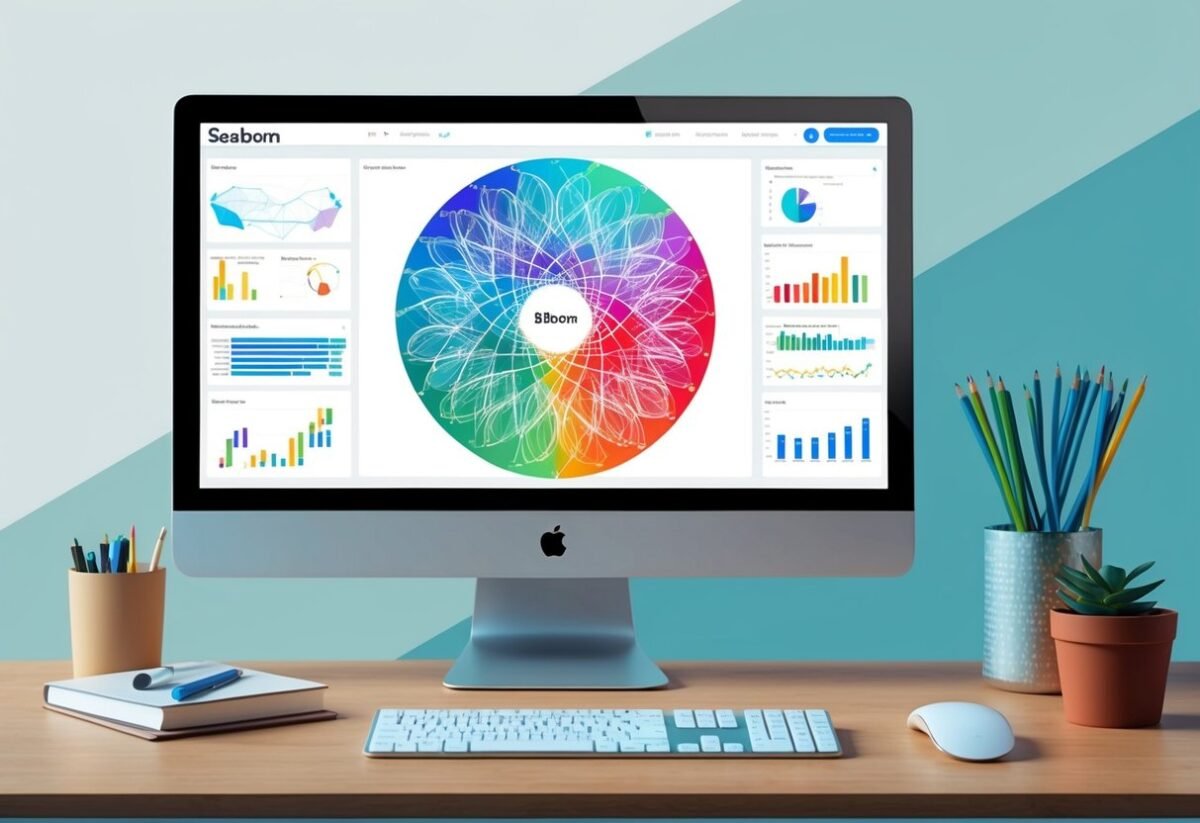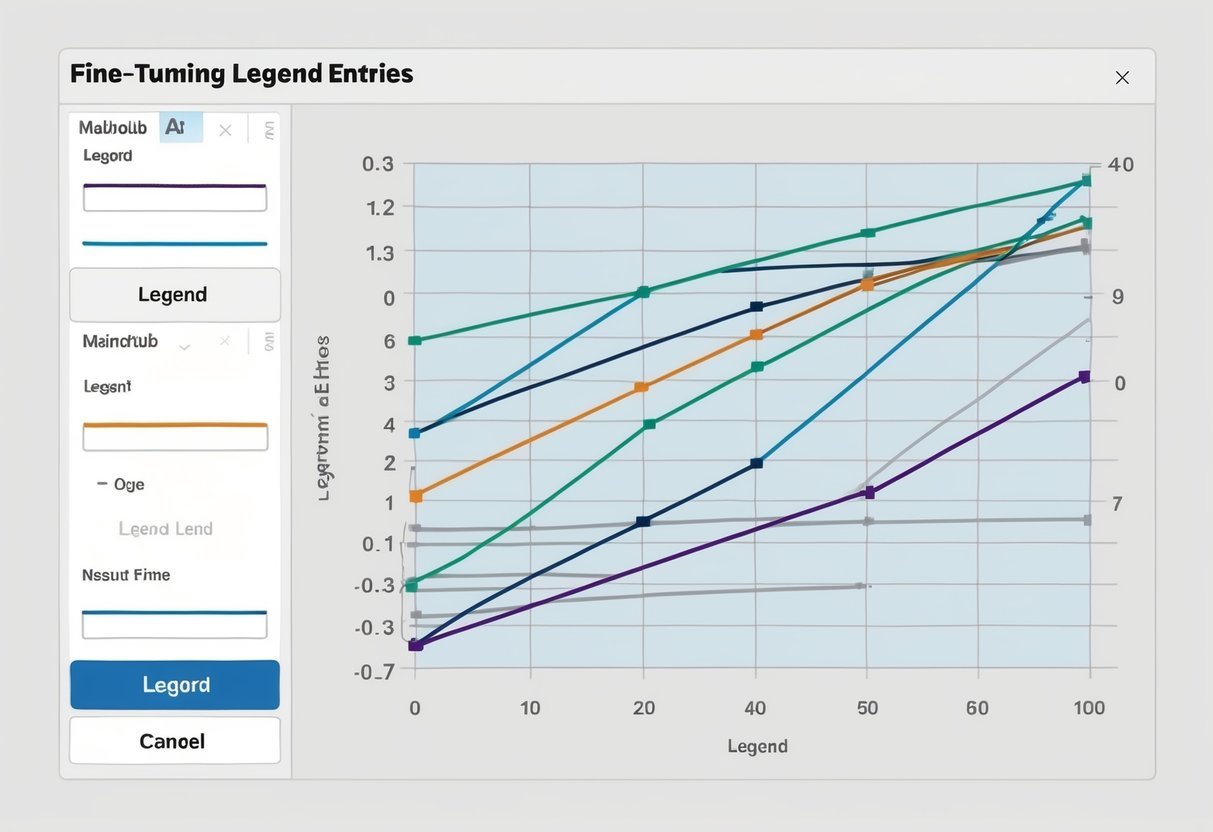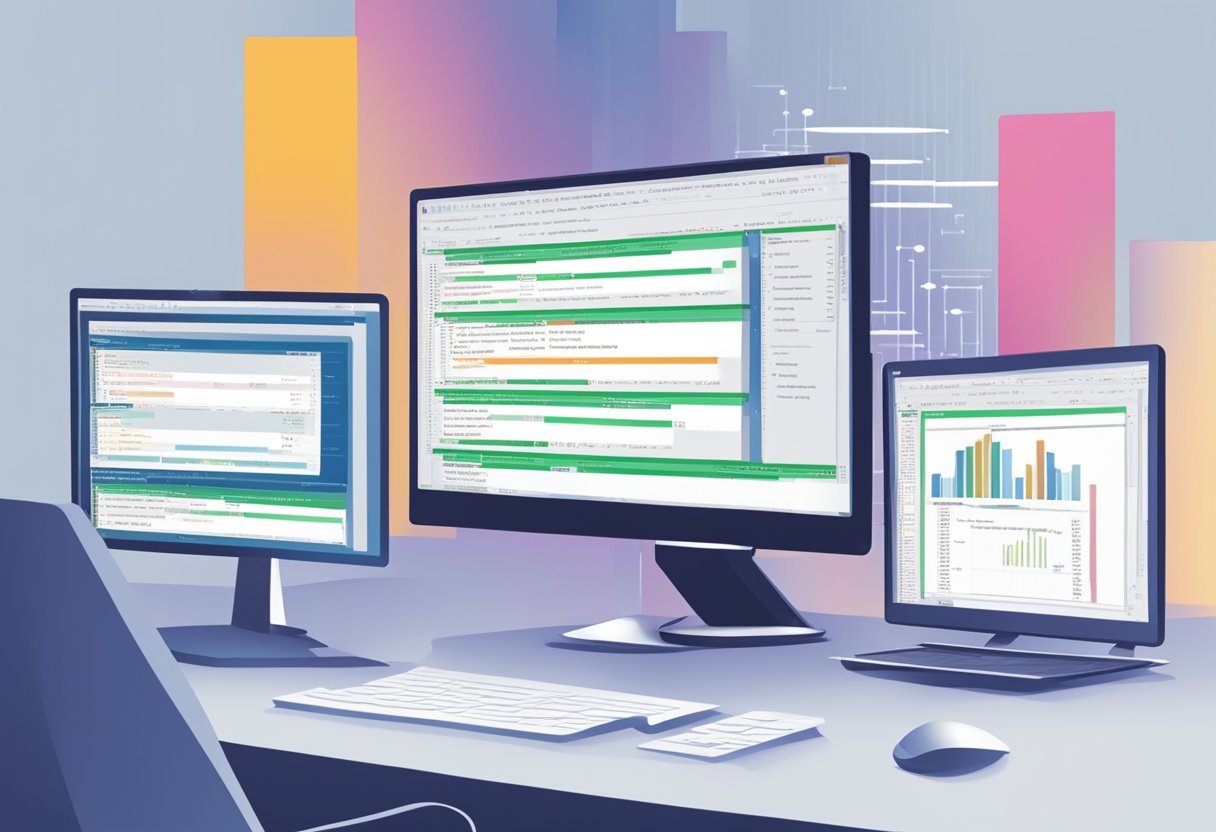Understanding Seaborn and Its Position in the Python Ecosystem
Seaborn, a Python library, simplifies statistical data visualization by offering an intuitive interface.
It enhances the capabilities of Matplotlib and works seamlessly with Pandas, making it a preferred tool for data scientists and analysts.
Overview of Seaborn as a Python Library
Seaborn is a powerful tool in the Python ecosystem for creating informative data visualizations. Unlike other libraries, Seaborn provides a high-level interface that simplifies the process of crafting complex statistical plots.
This library is built on top of Matplotlib and specifically designed to handle statistical plots with minimal coding effort.
One key feature is Seaborn’s ability to create visually appealing graphics with just a few lines of code.
It offers various plotting functions that are particularly useful for statistical data visualization, such as bar plots, scatter plots, and heatmaps. These features make it an essential tool for data analysis, allowing users to focus on interpreting results rather than coding details.
Comparison with Matplotlib and Integration with Pandas
While built on Matplotlib, Seaborn differentiates itself with a higher-level interface, streamlining the process of creating complex visualizations.
Matplotlib serves as a more general-purpose plotting library, offering extensive customization options. Seaborn, however, abstracts many of these details, making plotting simpler and more accessible.
Seaborn seamlessly integrates with Pandas, enabling it to handle data frames and apply data-centric operations efficiently. This integration allows users to plot data directly from Pandas data structures, enhancing workflow efficiency and reducing the need for data manipulation outside the libraries.
The combination of Seaborn, Matplotlib, and Pandas makes Python a versatile environment for comprehensive data analysis and visualization.
Getting Started with Seaborn
Seaborn is a popular Python library for data visualization. Before you can utilize its powerful tools, you need to install it properly and understand the software it relies on.
These steps are essential for using Seaborn effectively.
Installation and Setup
To start using Seaborn, you need to install it. You can install Seaborn using pip by running the command pip install seaborn in your terminal.
This method works well for most users with Python already installed. If you use Anaconda, Seaborn can be added using conda install seaborn. This can be a convenient choice since Anaconda manages dependencies automatically.
Once installed, you should verify the installation by importing Seaborn in a Python script with import seaborn as sns. Any errors during this step usually indicate issues with the installation that may need troubleshooting.
Understanding Seaborn Dependencies
Seaborn relies on several key libraries to function. It is built on top of Matplotlib, which handles the lower-level details of plotting.
This means that a working Matplotlib installation is necessary. Additionally, NumPy and SciPy are important for numerical operations. These libraries handle various mathematical functions and algorithms that Seaborn uses to create plots.
When installing Seaborn, pip and conda generally handle these dependencies for you. Still, ensuring they are up to date is crucial for avoiding compatibility issues.
Keeping these libraries updated ensures smoother operation of Seaborn.
Working with Data in Seaborn
Seaborn is a powerful tool for data visualization in Python, designed to work seamlessly with pandas dataframes. Understanding how to load and handle datasets is key to unlocking its potential.
The following subsections will provide insight into using Seaborn effectively with these data structures to create meaningful visualizations.
Introduction to Dataframes in Seaborn
Pandas dataframes are integral to working with Seaborn because they organize data in a tabular format that’s easy to manipulate and analyze. Each column in a dataframe can be viewed as a separate dataset, making it simple to plot variables and explore relationships.
Seaborn refers to these dataframes as inputs for its plotting functions. Whether the data involves numeric or categorical variables, the capability to directly utilize pandas dataframes allows for smooth integration. This direct use helps in creating detailed visualizations without extensive data manipulation beforehand, streamlining the entire process of data analysis.
Loading and Handling Datasets
When working with Seaborn, datasets can be loaded using typical Python file handling methods or directly from built-in functionalities. This versatile approach enables users to load various data types, such as CSV files or databases.
Once loaded, these datasets can be easily handled using pandas dataframe methods. Functions like .head() or .info() provide quick insights.
For instance, if one were working on the popular tips dataset or the pokemon dataset, such methods allow a user to understand the structure and content of the dataset quickly.
Handling datasets with these tools helps streamline the path to effective data analysis.
Utilizing the ‘load_dataset’ Function
Seaborn’s load_dataset function is a convenient feature for accessing ready-to-use datasets. This function downloads datasets from online repositories, making it easy to experiment with pandas dataframes without needing external files.
For instance, calling sns.load_dataset("tips") imports the tips dataset directly into a pandas dataframe format.
This function simplifies the process, especially for beginners exploring data visualization concepts. It also facilitates learning on pre-processed datasets, allowing users to focus more on visualization techniques rather than data preparation.
These tailored datasets, like those for learning purposes, greatly support users in honing their skills with Seaborn.
Exploring Basic Plot Types and Customizations
Seaborn offers a variety of plot types that help visualize data effectively. Users can create informative and visually appealing plots, like histograms and scatter plots. Customizations allow for adjusting colors and styles to better communicate insights.
Single Variable Plots
Seaborn excels in creating plots for single variables, often known as univariate plots. Histograms are widely used to display the distribution of a variable’s values. For example, they show how frequently each value appears in a dataset.
Histograms can be augmented with density plots, which provide a smoothed version of the data distribution.
Another effective plot type is the box plot, which summarizes a variable’s distribution. It highlights the median, quartiles, and potential outliers.
Violin plots extend the box plot by adding density information, making them useful for understanding the distribution and frequency of data.
Seaborn’s built-in themes ensure these plots are easy to customize and read.
Bivariate Plots
To explore relationships between two variables, Seaborn offers various bivariate plots. The scatter plot is essential for visualizing potential correlations, showing how changes in one variable might affect another.
By using Seaborn’s scatterplot function, users can easily illustrate these relationships.
For comparing distributions, the bar plot can represent categorical data against numerical values. Bivariate plots like line plots are also useful for tracking changes over time, making them ideal for time series data.
Each plot type can be styled using Seaborn’s themes, ensuring clarity and engagement with the data.
Customizing Plots with Seaborn Aesthetics
Seaborn’s flexibility shines in its customization capabilities. Users can modify plot aesthetics through colors and styles, helping to convey data stories effectively.
Seaborn provides several built-in themes like darkgrid or whitegrid, which adjust the plot’s background to match the desired mood or presentation style.
With Seaborn, users can also customize plot elements, such as fonts, sizes, and colors. This customization helps make plots more readable or highlight specific data points.
Adjusting the size of the plot elements ensures that visual elements do not overshadow data.
Using these Seaborn features, users can create plots that not only inform but also captivate the audience.
Statistical Plots for In-Depth Data Analysis
Seaborn provides a variety of tools for creating statistical plots that help with exploring data patterns, understanding relationships, and analyzing trends. These plots assist users in making data-driven decisions and uncovering valuable insights. Below are detailed descriptions of key types of statistical plots available in Seaborn.
Distribution and Relationship Plots
Visualizing data distributions is critical to spotting patterns and outliers. Distplot, also known as distribution plot, combines a histogram and a kernel density estimate (KDE) curve, providing a smooth representation of data distribution.
The KDE plot itself can be used independently to focus on data smoothness and continuity.
When analyzing relationships, the jointplot is ideal for displaying bivariate distributions with scatter plots and KDE alongside histograms on the axes. For broader relationship exploration, the pairplot offers a grid of plots for each variable pair in a dataset, facilitating quick insights into potential correlations.
Categorical Data Visualization
When dealing with categorical data, Seaborn offers versatile plotting options. The point plot is perfect for representing the relationship between categorical variables and a response variable, showing mean values and confidence intervals.
Another useful tool is the heatmap, which displays data in a matrix form with colors indicating different value ranges. This can help in identifying trends in large datasets.
For visualizing categorical data distributions across different categories, box plots and violin plots are commonly used, each providing a view of central tendency and variability within data categories.
Advanced Multi-Plot Grids
Advanced users might dive into complex datasets using multi-plot grids. Seaborn’s FacetGrid allows users to map plots across multiple facets or subplots in a single frame, making it easy to visualize data across subsets systematically.
This technique can be applied to create complex visual comparisons within data. For example, one can map a joint plot across several categories to explore how distributions and relationships vary between groups.
PairGrid takes this a step further by plotting multiple pair plots, enabling a comprehensive view and multi-variable analysis simultaneously.
These statistical tools in Seaborn support deeper data understanding and efficient visualization, facilitating more informed analyses.
Diving Into Advanced Plotting Techniques
Seaborn offers a variety of advanced plotting techniques that elevate the quality of data visualizations. These methods include combining multiple plots for comparative analysis, utilizing sophisticated plot types, and adjusting plot aesthetics through contexts and styles.
Mastering Multiple Plots on a Single Figure
Creating multiple plots on a single figure allows for direct comparisons and comprehensive analysis. This approach is particularly useful in exploring relationships between multiple variables.
Seaborn’s pairplot and facetgrid are powerful tools for such tasks. A pairplot can show pairwise relationships across an entire dataset, using different plot types like scatter or histogram.
The FacetGrid allows for even higher customization by mapping row and column subplots. This creates a grid of plots to visualize how relationships change across different categories or variables.
For example, using a grid to plot multiple violin plots side by side can easily reveal patterns in distinct groups. This method leverages the power of multi-plot visualizations to uncover hidden insights.
Exploring Seaborn’s Advanced Plots
Seaborn includes advanced plots that offer deeper insights into data. A violin plot is excellent for visualizing the distribution and probability densities of the data. It combines a box plot with a kernel density plot, showing not just medians but the full distribution.
Joint plots can handle two-dimensional data, displaying a regression line with scatter, among other combinations. These plots are useful for examining joint distributions and dependencies.
regplot is another advanced tool for regression analysis, ideal for visualizing linear relationships. It helps in understanding trends and patterns by fitting and visualizing linear models onto your data.
Leveraging Plotting Contexts and Styles
Seaborn offers flexible styling through contexts and styles, enhancing both aesthetics and clarity.
Contexts like “paper,” “notebook,” and “poster” adjust the scale of plot elements to suit different presentation settings. This is crucial for maintaining readability in various formats.
Theming allows for the application of custom matplotlib styles. This includes adjusting colors, lines, and even font sizes, making plots more visually appealing and consistent.
Semantic mapping techniques further enhance interpretability by using colors or markers to represent additional variables.
For instance, different hues can distinguish groups within a line plot, making multi-layered data easier to interpret at a glance.
Customizing Visual Representations for Clarity and Precision
Fine-tuning data visuals is essential for enhancing both understanding and interpretation.
Seaborn offers a variety of tools to adjust visual elements for precision and clarity, including error bars, confidence intervals, and customizable color palettes.
Using Error Bars and Confidence Intervals
In Seaborn, error bars and confidence intervals are used to depict variability and reliability in data.
When using a line plot, they help indicate the uncertainty of each point on the line.
Error bars illustrate the range around a data point or mean, showing the potential error margin. On the other hand, confidence intervals offer a range where the mean is likely to appear, providing an estimate of the data’s precision. Both are crucial for making informed inferences about the dataset.
Seaborn offers built-in support for adding these elements to your plots easily.
Adjusting parameters such as width or alpha level allows users to fine-tune the appearance of these indicators, providing a clear view of data trends and significance.
Adjusting Color Palettes and Themes
Another feature of Seaborn is its ability to customize color palettes and themes, enhancing the visual appeal and readability of data.
Color choices can significantly impact how data is understood, emphasizing specific details or trends.
Seaborn provides default themes and color palettes, which can be adjusted using various parameters.
For example, the sns.set_palette() function allows selection from pre-configured palettes or the creation of custom ones. Color palettes can highlight different data groups, making comparisons straightforward.
Moreover, integrating themes from Matplotlib ensures consistency across multiple graphics, enhancing the coherence of visual presentations.
By refining visual elements, Seaborn empowers users to craft precise and clear data visualizations.
Practical Tips for Effective Data Visualization
Creating effective data visualizations involves selecting appropriate plots and ensuring visual appeal while maintaining clarity. These two aspects can greatly enhance the interpretability and usefulness of the visual data representations.
Choosing the Right Plot for Your Data
Choosing the right plot begins with understanding your data type and the message you wish to convey.
Histograms are useful for displaying the distribution of numerical data, allowing viewers to see the frequency of data intervals.
Scatter plots are ideal for showing relationships between two continuous variables, making trends or correlations more apparent.
When summary statistics such as medians or quartiles are needed, a boxplot provides a clear snapshot of data spreads and outliers.
For more complex analyses, consider combining multiple types of plots. This involves using exploratory data analysis to gain insights.
Each plot type highlights different aspects of data, so the choice should align with the data’s story. More on plot selection can be found in the guide on data visualization with Seaborn.
Balancing Aesthetics and Functionality
Balancing aesthetics with functionality ensures that data insights are easily interpreted without distraction.
This involves using pleasing color schemes and well-organized layouts.
Seaborn, a visualization library, integrates with Matplotlib to offer statistical graphics that are both informative and attractive. Color palettes in Seaborn enhance the visual appeal without compromising readability.
Clutter-free design highlights key points effectively. Essential elements like labels and legends should be clear but not overwhelming.
Interactive elements can engage users more deeply with the visual content, aiding their statistical analysis processes.
For an elegant approach to visualization, explore the Practical Guide to Data Visualization with Seaborn for insights on combining aesthetics with functionality.
Seaborn for Exploratory Data Analysis
Seaborn is a powerful library for data visualization in Python, particularly useful for exploratory data analysis. It simplifies the process of discovering patterns and relationships in datasets through various types of plots. This section explores how Seaborn helps in understanding distributions, identifying trends, and comparing data subsets.
Understanding Distribution with Seaborn Plots
Seaborn provides a variety of plots to analyze data distributions effectively.
The histogram and boxplot are popular choices for visualizing univariate data.
A histogram helps in understanding the frequency of data points within certain ranges. It provides a visual representation of how values are distributed across intervals.
Meanwhile, a boxplot offers insights into the data’s quartiles and potential outliers, showing the spread and symmetry of the dataset.
For example, the distplot is used for creating histograms and includes a kernel density estimation by default, giving a smooth curve over the data.
Users can adjust the bandwidth according to their analysis needs, providing control over the plot’s appearance.
Identifying Relationships and Trends
To explore relationships between variables, Seaborn’s pairplot and jointplot are very useful. These plots make it easier to identify trends and correlations.
A pairplot creates scatter plots between every pair of variables in a dataset, allowing for quick identification of relationships. It also includes histograms along the diagonal for univariate analysis.
A jointplot focuses on the relationship between two variables by displaying their joint distribution. It combines elements like scatter plots and kernel density estimation, providing a more comprehensive overview.
By adding regression lines, it’s possible to explore potential linear relationships.
Comparing Subsets of Data
Seaborn allows users to compare different data subsets effortlessly through faceted plots.
Faceting creates multiple plots on a grid, which can be used to compare distributions or relationships across categories.
For instance, the FacetGrid function can be utilized to plot multiple subsets of the data, making comparisons across categories simple.
By organizing the plots in a grid format, patterns and anomalies become more apparent.
This feature is beneficial for breaking down complex datasets into smaller, digestible parts, enhancing insights into the variable interactions within subsets.
Refining Data Visualization with Seaborn’s Statistical Tools
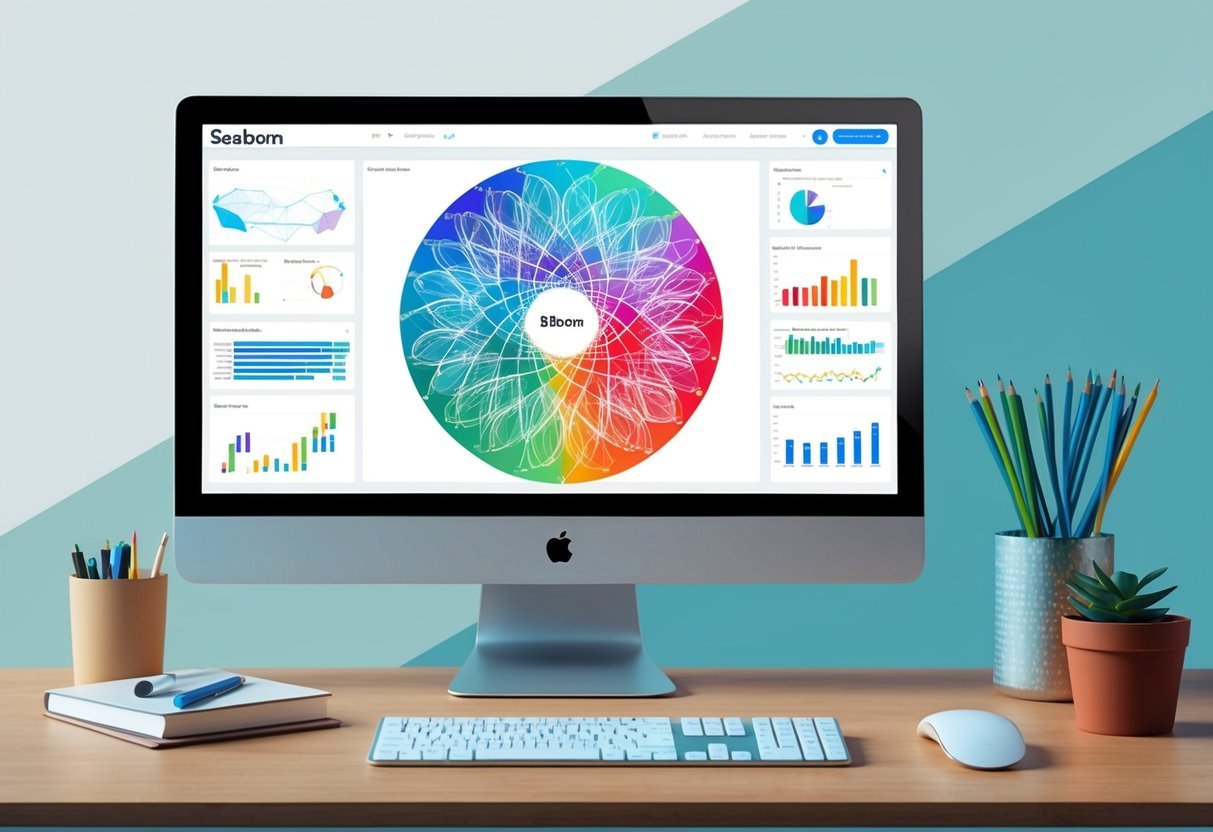
Seaborn offers an array of tools for enhancing data visualizations. Its capabilities make it easy to perform regression and kernel density estimation, and integrate statistical analysis tools like matplotlib to create insightful and visually appealing graphs.
Performing Regression and Kernel Density Estimation
Seaborn simplifies creating regression plots with functions like regplot. These plots allow users to add a regression line to their scatter plots, making it easier to observe trends or relationships in data. It helps in visualizing how one variable affects another, an essential part of regression analysis.
Kernel Density Estimation (KDE) plots are another powerful feature in Seaborn.
A kde plot is used to visualize the distribution of data over a continuous interval. KDE plots are useful for understanding the distribution shape and the varying density of data points, which can be crucial for data exploration.
They serve as a smoothed version of a histogram, providing more refined insights.
Integrating Statistical Analysis Tools
Seaborn integrates smoothly with matplotlib, enhancing its functionality for creating statistical plots.
The library offers a high-level interface, making statistical visualizations attractive and easy to produce. Through functions like barplot(), Seaborn displays categorical data concisely, enabling quick comparisons.
Statistical plots in Seaborn can highlight patterns and offer deep insights when combined with its analysis tools.
These tools allow users to incorporate statistical context into their visualizations, such as confidence intervals and error bars, enhancing the interpretability of graphs.
Seaborn’s blend of visualization and statistical tools equips users to create informative graphs, enhancing their ability to communicate data insights effectively.
Interactive and Dynamic Data Visualizations with Seaborn
Seaborn, a Python library, is versatile for creating interactive visualizations. While primarily known for static graphics, its features can integrate with tools like Jupyter Notebooks to enhance interactivity. This helps in exploring data more dynamically.
Incorporating Interaction in Seaborn Plots
Seaborn provides groundwork for visualization by building on Matplotlib. While Seaborn itself focuses on static plots, interactivity can be added using additional libraries like Plotly.
For example, using Seaborn’s relplot or pairplot, users can visualize relationships and modify them for interactive use.
To enhance interactions, exporting plots to Plotly format is effective. The code:
import plotly.tools as tls
plotly_fig = tls.mpl_to_plotly(seaborn_plot.fig)
plotly_fig.show()
uses Matplotlib’s rendering system to allow interactive features like zooming and hovering.
Leveraging Seaborn with Jupyter Notebooks
Jupyter Notebooks are excellent platforms for interactive work with Seaborn. Within this environment, Kernels provide the computational power to execute Python code.
This allows for using interactive widgets alongside Seaborn plots. For example, integrating FacetGrid with interactive sliders helps dynamically filter data.
Using plt.show() in a Jupyter Notebook can render the visualizations created with Seaborn for immediate feedback.
Combining the interactivity of Jupyter’s interface with Seaborn’s FacetGrid, users can create powerful exploratory data analysis tools that are both informative and engaging. The notebooks also support embedding Plotly plots, enabling further interaction directly within cells.
Expanding Seaborn’s Capabilities for Machine Learning and Data Science

Seaborn is a powerful tool for data visualization, offering diverse styles and plots useful for machine learning and data science. It easily integrates with libraries like Pandas and SciPy, enhancing the analysis and visualization of complex datasets.
Visualizing Machine Learning Datasets
Seaborn excels at visualizing data commonly used in machine learning. It supports categorical plots, which help in displaying the distribution of data across different categories.
For example, box plots allow comparison of variables by showing quartiles and outliers, providing insight into the data’s spread.
Pair plots are another feature, useful for exploring relationships between multiple variables simultaneously. They create a matrix of scatter plots that help identify trends and patterns across data variables. This visualization aids in observing potential correlations essential in feature analysis.
Heatmaps, supported by Seaborn, are effective for visualizing matrix-like data structures. They are useful in identifying clusters and patterns within a dataset.
These tools allow data scientists to prepare data better, making processes in machine learning smoother and more informed.
Integrating with SciPy for Advanced Statistical Analysis
Seaborn’s ability to integrate with SciPy allows for advanced statistical data analysis. This integration enables users to apply statistical functions directly to data visualizations.
For instance, users can add regression lines to scatter plots, which are calculated using SciPy’s robust statistical functions.
Seaborn supports plotting confidence intervals, enhancing interpretation by providing a visual measure of uncertainty.
This is achieved by leveraging SciPy’s statistical capabilities to calculate these intervals. This functionality is crucial for interpreting models and assessing predictions made by machine learning algorithms.
Working with Pandas and NumPy, Seaborn simplifies data manipulation and provides a seamless workflow for setting up and modifying data visualizations.
This collaboration empowers data scientists to perform complex statistical analysis while leveraging the advanced plotting capabilities of Seaborn.
Frequently Asked Questions

Seaborn is a powerful tool for creating data visualizations in Python. It offers various features and works well with both long-form and wide-form data.
Understanding its integration with other libraries and exploring practical examples can enhance the learning experience.
How do I get started with Seaborn for data visualizations?
To begin using Seaborn, it’s essential to have a basic idea of Python and some familiarity with data structures like dataframes.
Installing Seaborn via pip and reviewing its documentation will help users start creating plots quickly.
Can you explain the main differences between Seaborn and Matplotlib?
Seaborn and Matplotlib are both popular for data visualization. While Matplotlib is used for basic charting, Seaborn offers more customized themes and statistical plots.
Seaborn automates some plotting tasks, making it simpler for some types of visualizations. More detailed comparisons can be found on resources discussing their use cases.
What resources are available for learning Seaborn effectively?
Several online platforms provide tutorials and guides for Seaborn. Websites like GeeksforGeeks are helpful for learning basic to advanced features.
These resources often include code examples and explanations to enhance understanding.
How can I import Seaborn and set it up for creating visualizations in Python?
Seaborn can be imported through Python using the import seaborn as sns command. It relies on libraries like Matplotlib and pandas, so having them installed can be beneficial.
The Seaborn FAQ provides insights into setting up and troubleshooting common issues.
Are there any comprehensive guides or PDFs for advanced data visualization with Seaborn?
Online platforms like DataScientest and published ebooks can be useful.
These resources often contain in-depth discussions and examples that cater to advanced users looking for higher-level visualization techniques.
Where can I find practical examples of data visualizations using Seaborn?
Practical examples are available on many tutorials and educational platforms.
Websites such as Seaborn documentation often provide code snippets and visual examples to illustrate different types of plots. These can be great for applying knowledge and seeing Seaborn in action.
